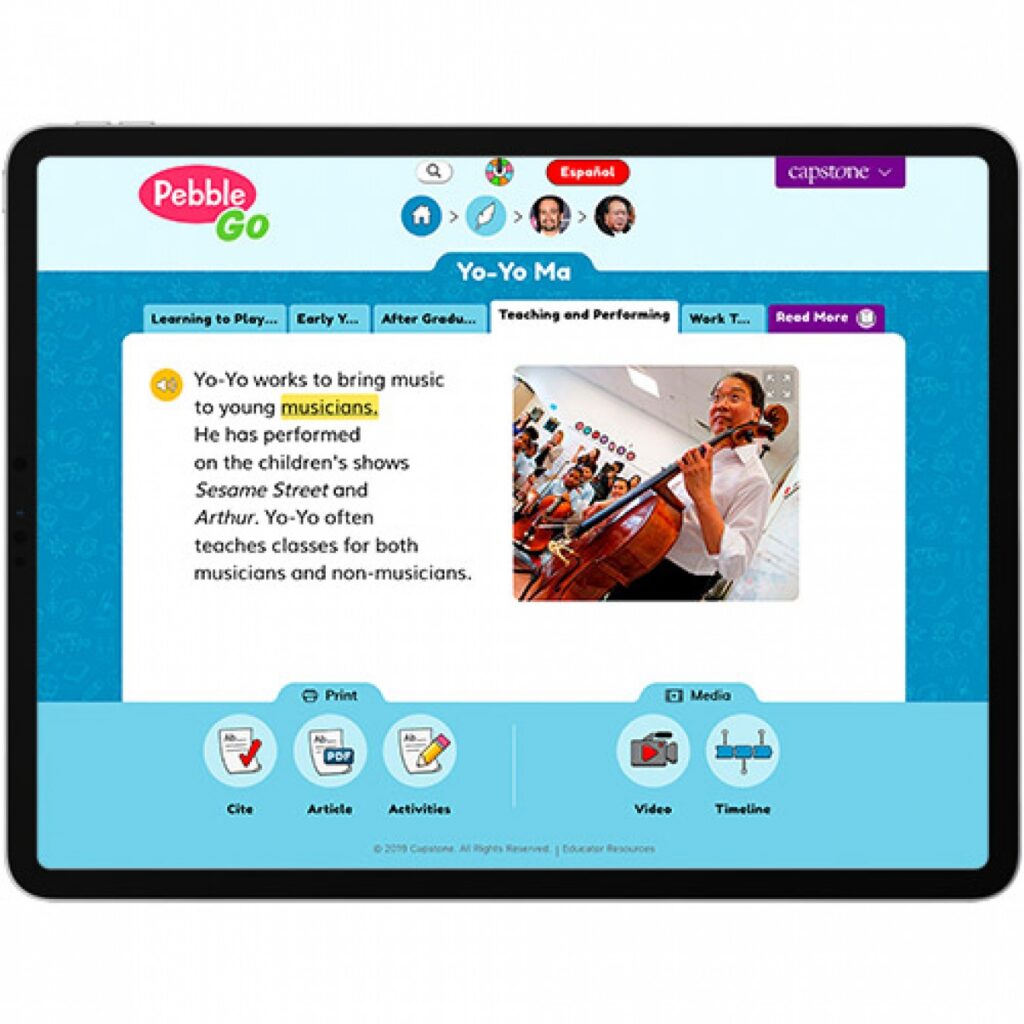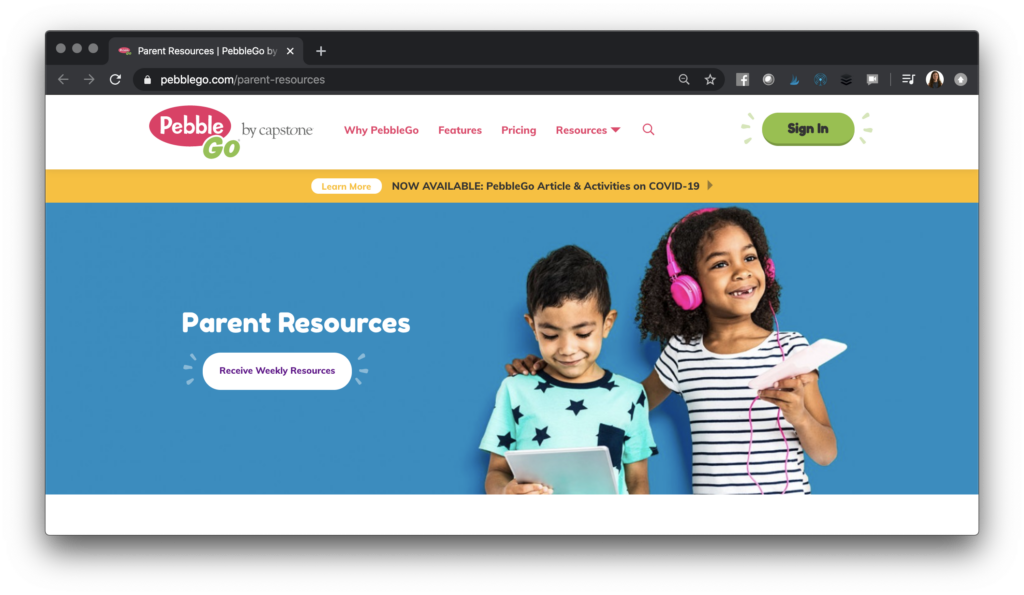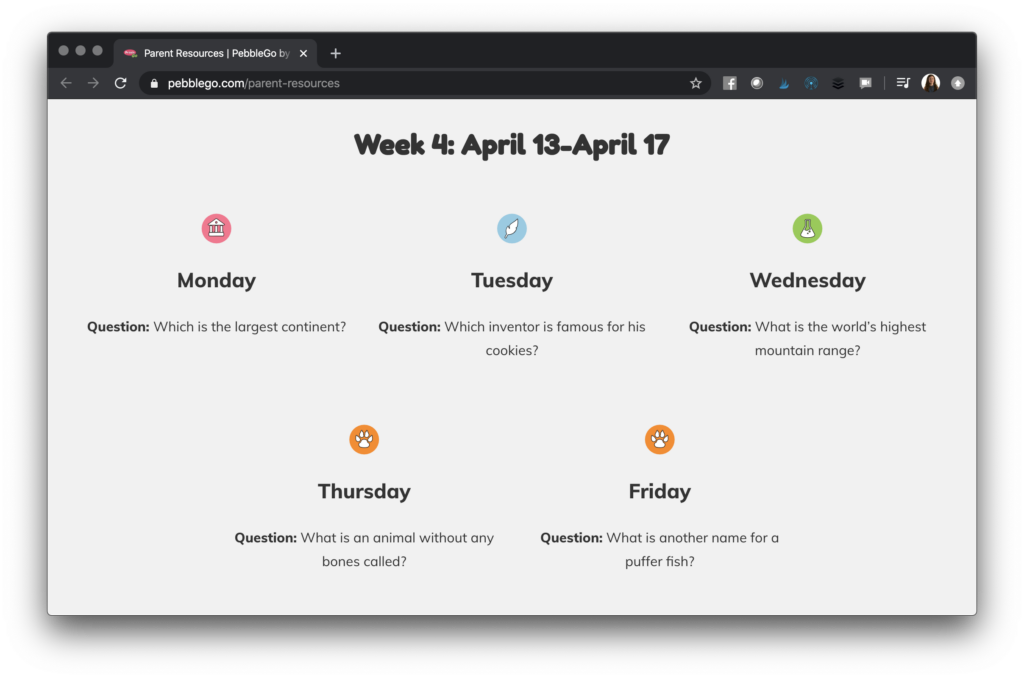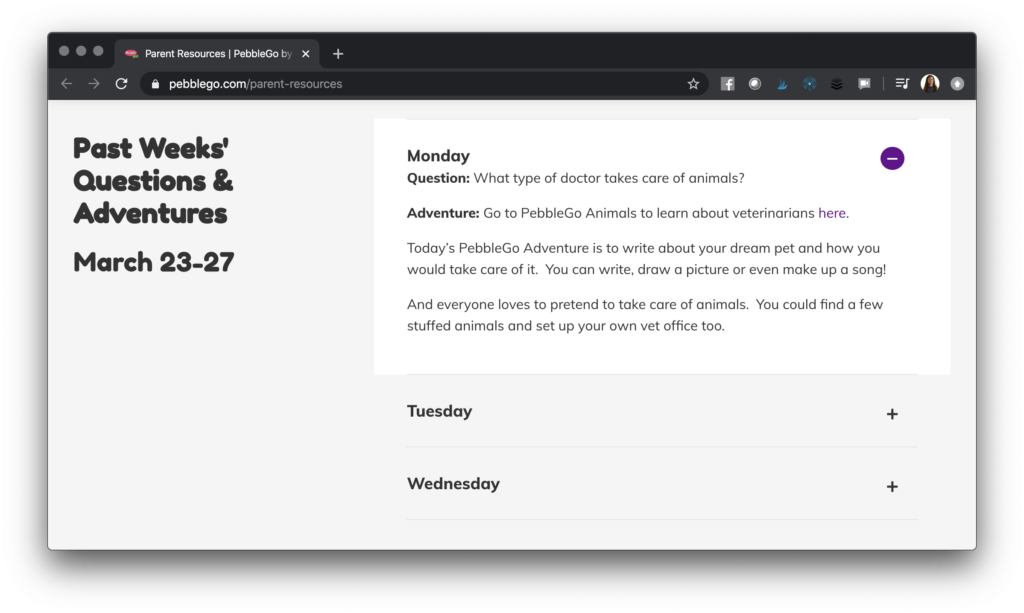Are you looking for resources to recommend to families, or use with your own young children? Earlier this year, I featured PebbleGo on my site and lots of ways to use their reading platform in the classroom. With a sudden shift to distance learning, I wanted to share with you a few quick tips and free nonfiction articles for kids.
In the blog post, we’ll talk about recommendations you might make to families who are supporting their children as readers at home. These quick tips can help you to make the most of the free reading materials for kids from PebbleGo. The PebbleGo resources are created with early elementary school-aged students in mind. However, you can tailor these ideas to students of any age and reading level.
Free Nonfiction Articles for Kids
If you are new to PebbleGo, they are a popular classroom resource for elementary school students. PebbleGo is usually subscription-based and gives members access to a database of free nonfiction articles for kids. There are high-interest, informational text, that students in elementary school use to read about a variety of topics.

Last year I featured an overview of PebbleGo on the blog, and earlier this year, I shared some project ideas and EdTech connections. With PebbleGo, kids can access text related to different subject areas as they strengthen English Language Arts skills. In addition to easy access to nonfiction articles, PebbleGo includes interactive lessons for kid-friendly topics, like animals and biographies.
The team at Capstone is offering PebbleGo for free for the rest of the school year. Educators or parents can sign up for free using this link. In addition to PebbleGo, you can also request to receive PebbleGo Next, and Capstone Interactive eBooks while your school is closed.

If your school already subscribes to Pebble Go, you might have noticed a few extras already in your account. Current users should already see all modules and add-ons in their accounts. All you have to do is log in the same way you have in the past. Then you’ll find the modules and add-ons waiting for you.
Quick Reading Tips from PebbleGo
In addition to providing free nonfiction articles for kids to teachers and families, PebbleGo has a resource page full of supporting material. What I love about this is how quick and easy it is to use. There isn’t a lot of prep work for families or teachers who use this resource. All you have to do is head to this landing page, and everything is waiting for you.

How does it work? Every week the team at PebbleGo shares a tip to use with student readers. Each day features a question designed to spark student interest and your child’s sense of wonder. The questions connect to the different resources from PebbleGo so you can even use the questions to help prompt a child to explore a specific nonfiction article.

Although the questions for the week we’re currently in will be at the top of the page, you can also scroll down and see questions from the previous week. You can click on each day to see the featured question along with an adventure for students. These questions feature different resources from within the PebbleGo library that kids can access for free.
Making Recommendations for Families
Regular readers of the blog might have seen my bonus episode of the Easy EdTech Podcast, where I talk about making recommendations for families. Some families may have challenges that take priority right now, while others are craving resources they can use with their children right away.
When recommending a resource like PebbleGo to families, you’ll want to share the what, why, and how. Here are a few things to consider when sharing PebbleGo:
- What: Introduce PebbleGo to families and share what the platform provides to students
- Why: Share your purpose for recommending PebbleGo and the ways it connects to building literacy skills often addressed in classroom settings
- How: Explain how to use PebbleGo, including how to log in and how to use the questions to start reading adventures at home
The way you share PebbleGo with families might include an email, a video conference, or even a recording where you share the connections to learning that usually takes place in school. This also provides an opportunity for you to communicate strategies (like using the daily questions) that may come in handy when families are reading with their children.
Reading Nonfiction Articles with Kids
The resources that the folks at PebbleGo have pulled together in response to the current public health crisis are perfect for recommending to families. It’s mobile responsive, so PebbleGo will work on any mobile device connected to the internet. There are nonfiction articles in both English and Spanish, and it’s compatible with assistive technology, too.
PebbleGo is the K-3 platform — and I’ve featured it on the blog in the past. As I mentioned above, PebbleGo Next, and Capstone Interactive eBooks are also available for free while schools are closed. Teachers and families can request access to these resources for the rest of the school year by using this link.
I can’t wait to hear what you think of this resource with free nonfiction articles for kids!







